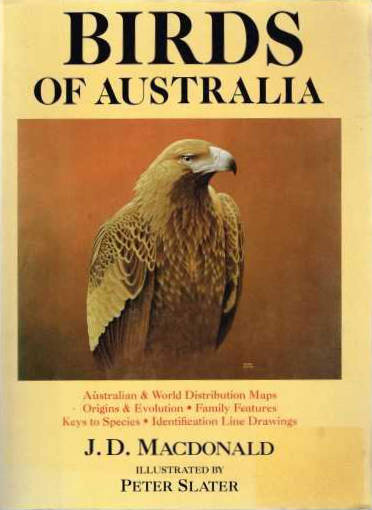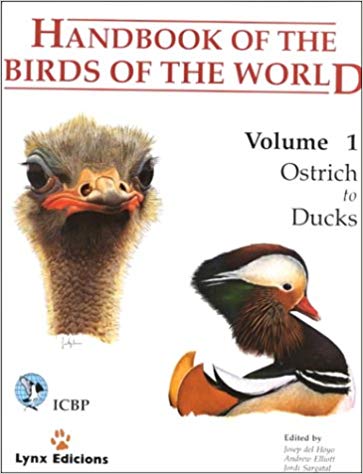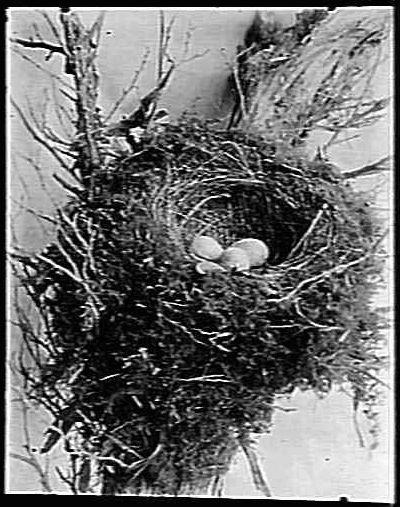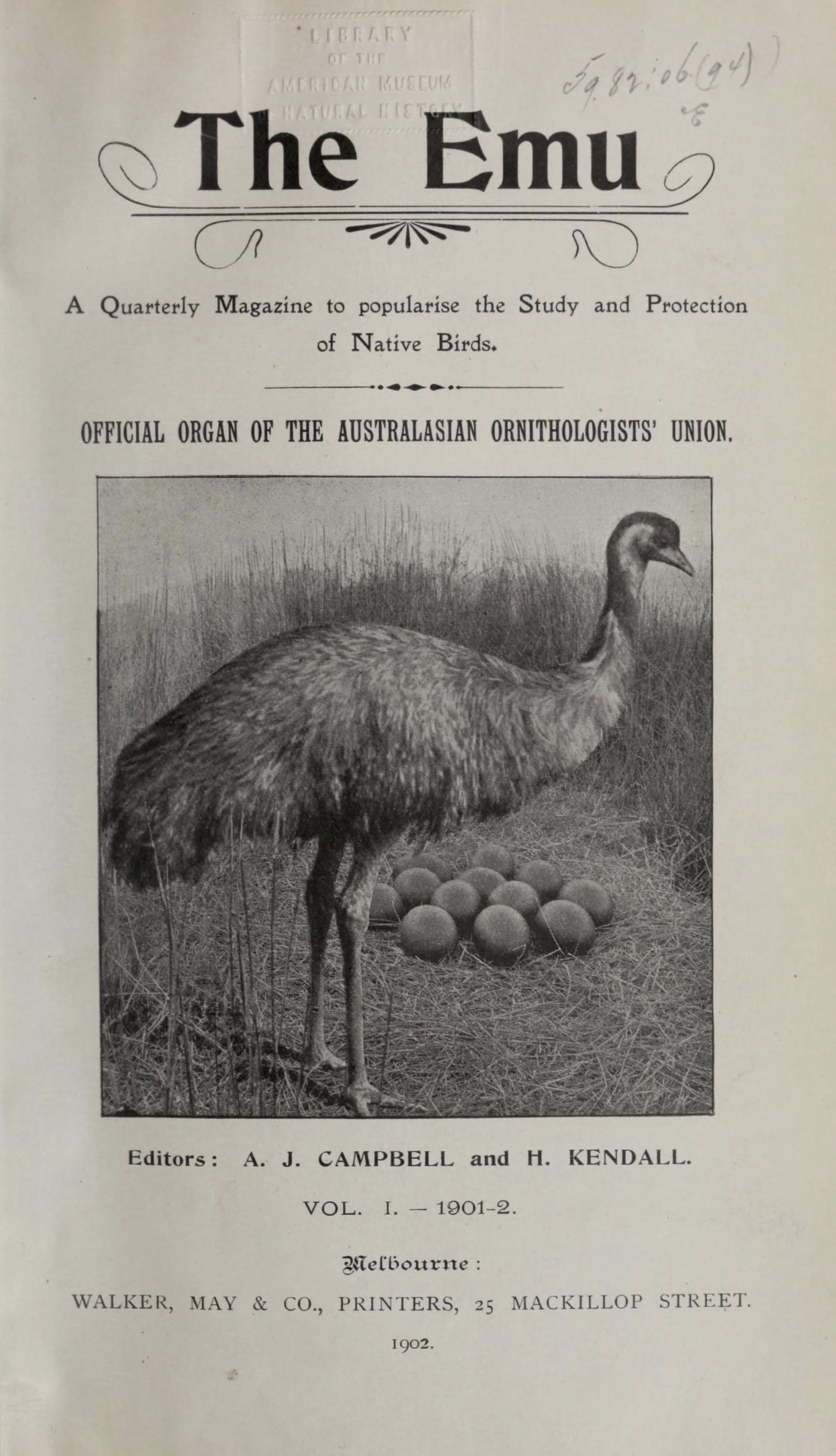 Possibly more so than in other branches of natural history, ornithology has had a long history of provincialism. For most of the last 500 years, most people who studied (and watched) birds were most interested in, and mostly wrote about, the birds of their own region. Different countries and cultures often started their own national—and regional—bird groups and people usually wrote books about the birds in their region. I can see the point of regional field guides but regional bird books that detail plumages, breeding biologies, annual cycles and ranges do not seem to make much sense anymore.
Possibly more so than in other branches of natural history, ornithology has had a long history of provincialism. For most of the last 500 years, most people who studied (and watched) birds were most interested in, and mostly wrote about, the birds of their own region. Different countries and cultures often started their own national—and regional—bird groups and people usually wrote books about the birds in their region. I can see the point of regional field guides but regional bird books that detail plumages, breeding biologies, annual cycles and ranges do not seem to make much sense anymore.
Until fairly recently most bird books focussed on states, provinces, and, less often, countries. Writers about the history of ornithology generally also have their national biases. Various colleagues have told us, for example, that our own Ten Thousand Birds gave short shrift to the history of European, American, Japanese, Russian, Australian and Chinese ornithology. I took this as a good sign as everyone seemed to be equally offended, suggesting that we might actually have achieved something of a balanced coverage [1].
 The current millennium has embraced gobalization, a trend that is gradually pushing back against that provincialism, much to the benefit of ornithology. Birds do not recognize political boundaries, so why should we when we study them? The success of xeno-canto, the Handbook of Birds of the World, the International Ornithological Congress [2] and its world checklist, ebird, and phylogenies encompassing all bird species worldwide [3] attest to the interest in—and value of—a global approach to ornithology. When I approached the AOS, about a year ago, to prepare this website and write these weekly blog posts on the history of ornithology, I insisted that it have a global (rather than American) scope, and they agreed enthusiastically.
The current millennium has embraced gobalization, a trend that is gradually pushing back against that provincialism, much to the benefit of ornithology. Birds do not recognize political boundaries, so why should we when we study them? The success of xeno-canto, the Handbook of Birds of the World, the International Ornithological Congress [2] and its world checklist, ebird, and phylogenies encompassing all bird species worldwide [3] attest to the interest in—and value of—a global approach to ornithology. When I approached the AOS, about a year ago, to prepare this website and write these weekly blog posts on the history of ornithology, I insisted that it have a global (rather than American) scope, and they agreed enthusiastically.
That said, because I am Canadian and have not yet even been to much of Europe, Asia and Africa, my ‘American’ biases and the scope of what I write about will always display some provincialism. I hope to rectify that soon by soliciting contributions from ornithologists worldwide to make this website a truly global resource for the history of ornithology. With this post I will start a series on the beginnings of ornithological societies and journals outside the historical North American and European epicentre of bird study.
![]()
In 1987, when I stepped out of the airport building in Cairns on my first sabbatical and first visit to Australia, I knew right away that I had entered a different world. As I stood on a grassy median waiting for my rental camper, small flocks of spoonbills, Australian White Ibises, Masked Lapwings and Straw-necked Ibises wheeled about punctuated by a flock of parrots screaming past. I heard both a Kookaburra and a Pied Currawong in the distance. I actually thought for a moment that I was dreaming, still asleep in the plane somewhere over the south Pacific. Few bird experiences have left such a vivid impression on me and I realized right away that I really knew nothing about birds, despite almost 25 years of birding experience and ornithological research. When I saw 10,000 spectacled flying foxes stream over our camp at Yorkey’s Knob that evening, I wondered again if I was still dreaming.

That experience, and subsequent field trips to Heron and Lizard Islands, the Atherton Tableland, New South Wales, and Shark Bay (WA) convinced me that naturalists like Eleanor Russell and Ian Rowley were quite right to observe that many Australian birds did not follow the rules derived from bird studies in Europe and the Americas. As Rowley and Russell, and later Andrew Cockburn and Raoul Mulder, and many others, have shown us, any general analysis that ignores Australian birds gives an incomplete picture of the factors that shape bird behaviours and ecologies—cooperative breeding in particular.
I sometimes wonder if the founders the Australian Ornithologists’ Union felt the same about the unique lessons to be learned by studying Australian birds. A closer look at the state of ornithology in the late 1800s, suggests to me that they may not have, in part because many of them were expat Brits, who seemed intent on importing European ornithology to the Australian shores [4].

On the evening of 15 August 1896, 17 men [5] interested in natural history met at Britannia House , South Yarra (Melbourne), Australia, for an ornithological dinner [6] and social. The table was decorated with heaps of local flowers (acacia and native heaths) surrounding a freshly collected nest and eggs of the Bassian Thrush [7]. The nest had been collected by A. J. Campbell, who organized the soirée and had, at that time, the largest collection (500 species) of eggs of Australian birds. Campbell read a paper on some of his experiences in the field, and showed lantern slides of birds and nests that he had seen in his travels. As the local newspaper reported: “Before breaking up the meeting resolved to form an Australian Ornithological Union, on similar lines to the British and American Ornithological Unions.” [8]
The group met again in 1897, 1899, and 1900, resolving then to form an official society to represent Australian ornithology. With the patronage of ‘Their Royal Highnesses the Duke and Duchess of Cornwall and York’ [9] the Australian Ornithological Union was founded in July 1901, to study and protect birds. Its first general meeting convened in Adelaide in October of that year, where they resolved that “The Objects of the Society are the advancement and popularization of the Science of Ornithology, the protection of useful and ornamental avifauna, and the publication of a magazine called The Emu” [10].
 The Emu began publication with that 1901 meeting, edited by A.J Campbell and H. Kendall, and is still going strong today, 117 years later. It was intended “to be “an outward and visible sign” of union, and should prove of value in the good cause. It will provide a recognized means of intercommunication between all interested in ornithology, whatever their branch of that study may be, and afford all an opportunity of recording facts and valuable observations, and of giving publicity to those and their own deductions. Thus bird students will be kept in touch with one another, original study will be aided, and an Australasian want supplied. [11]
The Emu began publication with that 1901 meeting, edited by A.J Campbell and H. Kendall, and is still going strong today, 117 years later. It was intended “to be “an outward and visible sign” of union, and should prove of value in the good cause. It will provide a recognized means of intercommunication between all interested in ornithology, whatever their branch of that study may be, and afford all an opportunity of recording facts and valuable observations, and of giving publicity to those and their own deductions. Thus bird students will be kept in touch with one another, original study will be aided, and an Australasian want supplied. [11]
That first issue introduced the society and the new journal but also contained papers on taxonomy, Emu feathers, bird protection, new specimens, whether birds were harmful or beneficial to agriculture, spring arrivals, bird behaviour and news of members, other journals and magazines, and exhibitions. While the content was somewhat different in emphasis from contemporary papers in The Auk and The Ibis, having generally more behavioural observations, there was still much about taxonomy and distributions, which dominated those other journals. Before The Emu, Australian ornithologists published mainly in The Ibis and The Victorian Naturalist, and there is no reason to expect that The Emu changed the kinds of papers published by Australians but rather just became a local venue focused on Australian birds. I was struck, however, by the quality and quantity of bird, nest and egg photos in those early issues [12].
One major difference in the focus of ornithology in Australia compared to Europe and North America, was the need to gather basic information about Australian birds. As the editor of that first edition of The Emu said: “Nearly lOO known species have their nests and eggs still undescribed, and of a large proportion of our birds some phases at least of their life-history are unknown.” [13]. The pages of The Emu often contained such descriptions for years to come, at a time when only a handful of North American, and no European, still needed descriptions of their basic breeding biology.
It took more than a century of changes in technology, travel, trade and the accumulation of ornithological knowledge to fulfill the promise that the editors of the Emu made in 1901: “No country or clime — only the wide world itself — limits the work and enthusiasm of the true naturalist.” [14].
SOURCES
- Campbell AJ, Kendall H [presumably] (1901) The Australian Ornithologists’ Union: Its origin. The Emu 1: 1-5.
-
Cockburn A (1998) Evolution of helping behavior in cooperatively breeding birds. Annual Review of Ecology and Systematics 29:141–177.
-
Mulder RA, Magrath MJL (1994) Timing of prenuptial molt as a sexually selected indicator of male quality in superb fairy-wrens (Malurus cyaneus). Behavioural Ecology 5:393–400.
-
Roblin L (2002) The Flight of the Emu: A Hundred Years of Australian Ornithology 1901-2001. Melbourne University Publishing.
-
Russell E, Rowley I (1988) Helper contributions to reproductive success in the splendid fairy-wren (Malurus splendens). Behavioral Ecology and Sociobiology 22:131–140.
Footnotes
- balanced coverage in Ten Thousand Birds: I say this tongue in cheek as I am well aware that our treatment is biased and we pointed that out in our introduction. To our credit, I think we tried to give equivalent, if not equal, attention to the history of ornithology in Britain and North America, where all three authors had considerable experience.
- International Ornithological Congress: will hold its 27th meeting in Vancouver next month. I am not likely to be able to attend, but it looks like a fabulous meeting, and UBC Press will launch a new Birds of Nunavut, for which I wrote a couple of chapters and a few species accounts (more later on that example of provincialism).
- worldwide bird phylogenies: see here, here and (eventually) here
- importing European ornithology: I do not have any hard evidence for this but it would be worth looking at Roblin (2002) to see if she mentions this. I have ordered it and will report when I have read the book.
- 17 men: yes, they were all men, just as were the founders of the AOU, BOU and DO-G in North America, Britain and Germany, respectively (see here and here for earlier posts on this topic). The Union was eventually established with 137 members, 6 of whom were women but even that small number was a remarkable achievement in those days.
- ornithological dinner: see here for more on this topic, in a different context
- Bassian Thrush: (Zoothera lunulata) was called the Ground or Mountain Thrush in the late 1800s. The nest was large and covered with moss; the eggs are a pale greyish with dense red-brown maculation
- quotation from local newspaper: from Campbell and Kendall 1901, page 1
- Duke and Duchess: visited Australia in 1901 as part of an ‘Empire Tour’ following the opening of the Commonwealth Parliament of Australia. When they returned to England, they became the Prince and Princess of Wales, and later, in 1910, King George V and Queen Mary. when Edward VII died.
- quotation about the first general meeting: from The Emu 1:33, presumably written by the editors
- quotation about the purpose of The Emu: from page 5 in Campbell and Kendall 1901
- photos in first issue of The Emu: in contrast the entire 1901 volume of The Auk contained only photos of nests and eggs, and none of birds save a Pine Grosbeak on a nest. The Ibis had a couple of bird photos but excelled with line drawings of anatomy and coloured illustrations of birds.
- unknown species quote: from editorial note before page 1 in The Emu 1
- quotation about no limits to the naturalist: from editorial note at bottom of p 8 in Campbell and Kendall 1901
IMAGES: Bassian Thrush nest and eggs photo by A.J. Campbell (Museums Victoria, https://collections.museumvictoria.com.au/articles/1533); book and journal covers in the public domain; Straw-necked Ibises photo by Cyrus Ray Macey, Wikimedia Commons.
Bob,
Enjoyed your post today on ornithology in Australia. I’ve been there 3 times including the IOC in Canberra and a year at the CSIRO Protein Chemistry Lab in Melbourne.
One of the most impressive ornithologists I met there was L. H. Smith. Len, born in Australia, was trained as a chemist in the UK and lived many years in Melbourne. As a hobby at first he began a long term study of Lyrebirds in the nearby Sherwood Forest. After a career working for the National Gas Association, he became Director of National Parks in Victoria. Work on the highly territorial Lyrebirds involved long term studies that included moult, breeding behavior, systematics and feather structure and shape. His work is truly unique and he had an amazing collection of individual tail feathers collected over successive year.
Best,
Alan